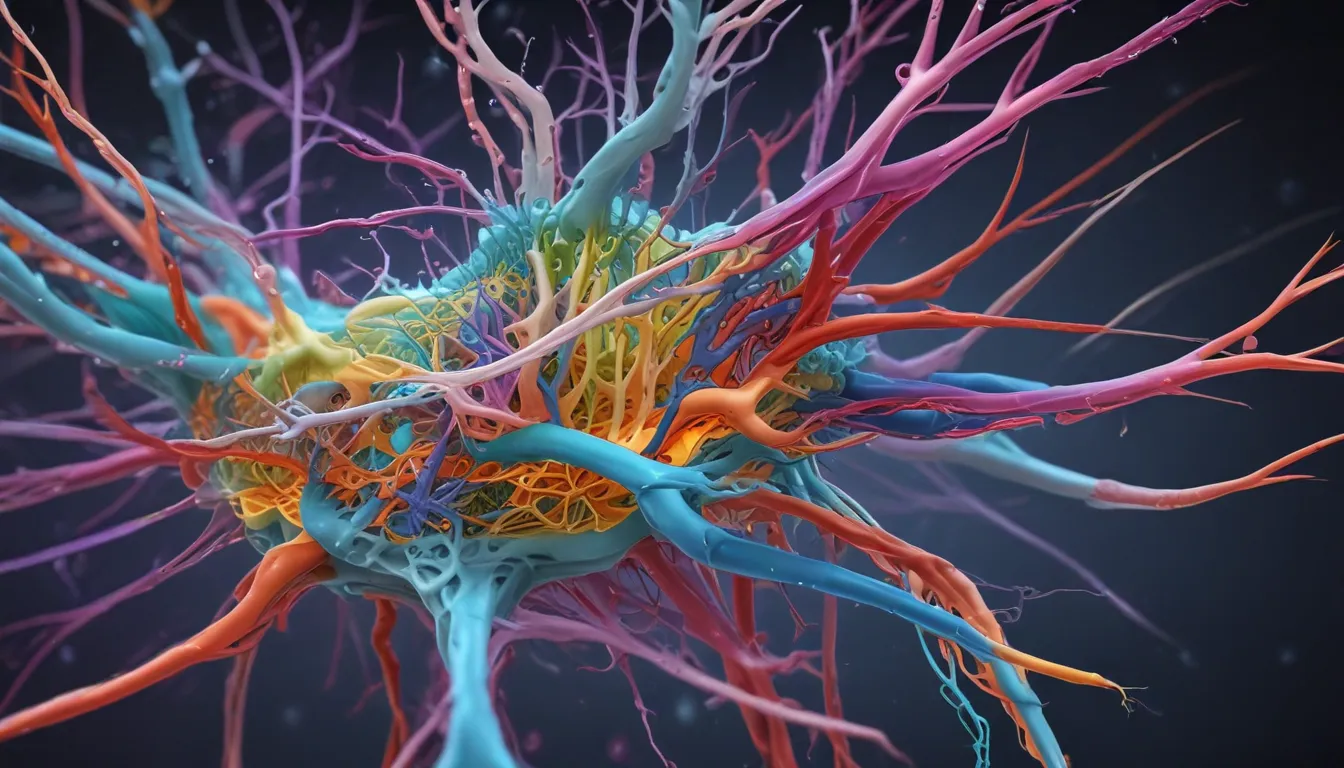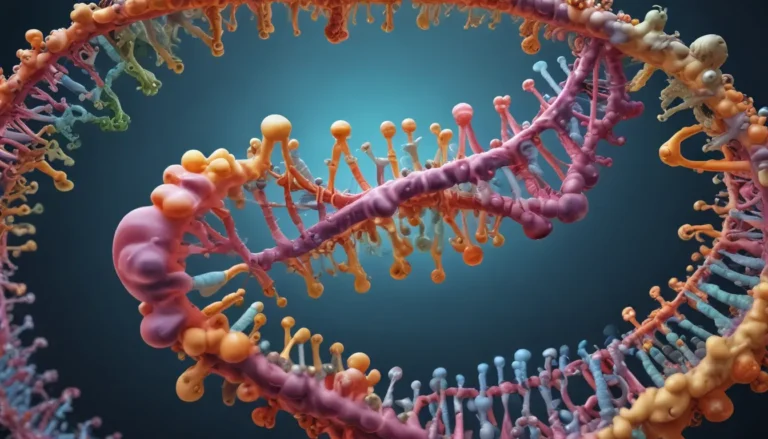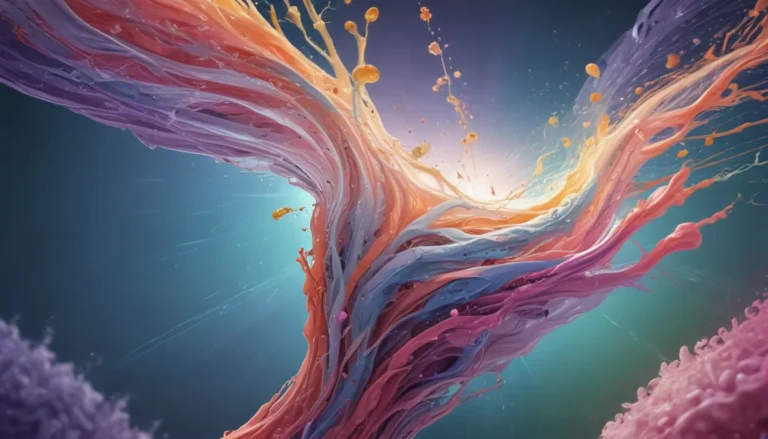A Note About Images: The images used in our articles are for illustration purposes only and may not exactly match the content. They are meant to engage readers, but the text should be relied upon for accurate information.
Have you ever stopped to ponder the intricate world of the cytoskeleton? This hidden marvel found in every cell of the human body plays a crucial role in maintaining cellular structure, supporting cell movement, and regulating various cellular processes. Despite its significance, the cytoskeleton often remains overshadowed by other organelles. In this enlightening article, we will delve into the fascinating realm of the cytoskeleton, unveiling 18 intriguing facts that are bound to captivate and astound you. From its diverse composition to its involvement in diseases and cell division, join us on a journey to uncover the secrets of this essential component of life itself.
Unraveling the Marvel of the Cytoskeleton
The cytoskeleton is like the skeleton of a cell, providing structural support, aiding in movement, and facilitating cell division. Comprised of various protein filaments, this complex network acts as a bustling highway system within the cell, ensuring materials are transported efficiently to their destinations. Let’s explore the key components and functions of the cytoskeleton that make it an indispensable player in the intricate world of cellular biology.
The Essential Role of the Cytoskeleton
At the core of every cell lies the cytoskeleton, a dynamic network of proteins that offers structural support and helps cells maintain their shape. Beyond its foundational role, the cytoskeleton is involved in a myriad of cellular processes, including cell division, movement, and signaling. It serves as a backbone, orchestrating the intricate dance of life within every cell.
Unveiling the Trinity of Components
The cytoskeleton is a sophisticated structure comprised of three major components: microtubules, microfilaments, and intermediate filaments. Each component is crafted from distinct proteins and carries out specialized functions within the cell, contributing to the overall harmony and functionality of the cytoskeleton.
Discovering the Microtubular Highways
Microtubules, akin to cellular highways, are elongated, hollow tubes constructed from the protein tubulin. These vital structures serve as conduits for organelles, vesicles, and other cellular cargo, ensuring smooth transportation within the cell’s bustling interior.
Embracing the Supportive Role of Microfilaments
Microfilaments, also known as actin filaments, are delicate, thread-like structures composed of actin proteins. These filaments provide mechanical support to the cell, playing a pivotal role in cell contraction and division, akin to the intricate movements of a ballet dancer orchestrating the cell’s choreography.
Upholding Stability Through Intermediate Filaments
Intermediate filaments, characterized by their ropelike structure, offer mechanical stability to the cell. Unlike the dynamic nature of microtubules and microfilaments, these structures are steadfast and less flexible, playing a crucial role in preserving the cell’s overall form and function.
The Dance of Assembly and Disassembly
One of the remarkable attributes of the cytoskeleton is its ability for dynamic assembly and disassembly. This intricate dance allows cells to swiftly reorganize their internal structures in response to changing stimuli, underscoring the adaptability and resilience of cellular life.
Interconnected Protein Web of the Cytoskeleton
Within the cell, cytoskeletal proteins intricately weave together, forming a complex network akin to an interconnected web. This intricate web-like structure enables seamless coordination and communication between different cellular components, fostering harmony and unity within the cell.
Guiding the Way: Cytoskeleton and Cell Movement
Akin to a compass, the cytoskeleton guides cell movement, providing the necessary framework for cells to crawl, contract, and morph into various shapes. This intrinsic ability allows cells to migrate during vital processes such as wound healing and embryonic development, showcasing the dynamic nature of cellular life.
Orchestrating Cellular Traffic Control
Serving as a vigilant traffic controller, the cytoskeleton regulates the movement of vesicles and organelles within the cell, ensuring precise delivery to their designated destinations. This meticulous control mechanism sustains proper cellular function, akin to a well-coordinated symphony within the cell.
Centerstage: Cytoskeleton in Cell Division
A pivotal player in cell division, the cytoskeleton is indispensable for the formation of the mitotic spindle. This crucial structure segregates duplicated chromosomes during cell division, highlighting the intricate choreography orchestrated by the cytoskeleton in the perpetuation of life.
Unveiling Cytoskeletal Disorders
Disruptions in the cytoskeleton can lead to a spectrum of disorders, ranging from muscular dystrophy to neurodegenerative conditions like Alzheimer’s and Parkinson’s disease. The intricate balance of the cytoskeleton is key to maintaining cellular health and preventing aberrant conditions.
Signaling Pathways: Cytoskeleton’s Intracellular Role
The cytoskeleton acts as a scaffold for intracellular signaling, enabling cells to respond to external cues such as growth factors, hormones, and neurotransmitters. This framework facilitates the transmission of signals from the cell’s periphery to its nucleus, modulating critical cellular functions.
The Cytoskeleton’s Encounter with Cancer
Alterations in the cytoskeleton are pervasive in cancer cells, influencing cell shape, mobility, and invasiveness. These changes contribute to the development and progression of cancer, underscoring the vital role of the cytoskeleton in the dynamics of disease pathology.
Navigating Neurodevelopment with the Cytoskeleton
In the intricate realm of neuronal development, the cytoskeleton plays a central role in guiding axon growth and dendritic spine formation. This vital process establishes and maintains the complex neural network, enabling proper neuronal communication and function.
Embracing Cellular Contact: Cytoskeleton Unites Cells
The cytoskeleton serves as a crucial player in cell-cell contact and adhesion, fostering connections between neighboring cells to form tissues and organs. This intercellular communication network lays the foundation for tissue development and maintenance, embodying the collaborative spirit of cellular life.
The Ingenious Molecular Motors: Guiding the Cytoskeleton
Molecular motors such as dynein and kinesin engage with the cytoskeleton to transport cargo within the cell. These dynamic motor proteins utilize ATP energy to traverse along microtubules and microfilaments, amplifying cellular movement and ensuring precise cargo delivery.
A Symphony of Reorganization: Cytoskeleton in Cell Migration
During the intricate ballet of cell migration, the cytoskeleton undergoes meticulous reorganization to facilitate coordinated cell movement. This dynamic rearrangement enables cells to extend protrusions, generate traction, and journey towards their destined locations with precision and grace.
Embracing Adaptation: Cytoskeleton’s Response to Environment
The cytoskeleton possesses an innate ability to adapt to varying environmental conditions and stimuli. Rapid reorganization of its structure and mechanical properties allows cells to respond to factors such as temperature fluctuations, nutrient availability, and mechanical forces, showcasing the adaptive prowess of cellular life.
The Unyielding Journey of Discovery
In the intricate tapestry of cellular life, the cytoskeleton stands as a vital cornerstone, orchestrating cellular integrity, movement, and function. Through a deeper understanding of this complex molecular machinery, researchers can unravel the mysteries of diseases, paving the way for innovative therapeutic interventions and groundbreaking discoveries in cell biology.
Unveil the Enigma: FAQs on the Cytoskeleton
-
What is the cytoskeleton?
The cytoskeleton is a dynamic network of protein filaments that provides structural support, facilitates cell movement, and regulates various cellular processes. -
What are the main components of the cytoskeleton?
The cytoskeleton comprises three main components: microtubules, microfilaments, and intermediate filaments. -
What is the function of the cytoskeleton?
The cytoskeleton plays a pivotal role in maintaining cell shape, providing mechanical support, facilitating cell division, intracellular transport, and cell signaling. -
How does the cytoskeleton contribute to cell movement?
The cytoskeleton, particularly microtubules and microfilaments, orchestrates cell movement by organizing and generating forces critical for cell motility. -
What happens when the cytoskeleton is disrupted?
Disruption of the cytoskeleton may lead to cellular abnormalities, manifesting as defects in cell shape, impaired cell movement, and disrupted cellular processes. -
What role does the cytoskeleton play in disease?
Dysregulation of the cytoskeleton is associated with various diseases, encompassing cancer, neurodegenerative disorders, and cardiovascular conditions. -
How is the cytoskeleton studied?
Researchers employ diverse techniques, including microscopy, live-cell imaging, and genetic manipulation, to investigate the cytoskeleton and its intricate functions. -
Are there any drugs that target the cytoskeleton?
Yes, several drugs influencing the cytoskeleton, such as anti-cancer medications and treatments for specific neurological disorders, have been developed. -
Can the cytoskeleton be repaired or regenerated?
Ongoing research explores strategies to repair or regenerate damaged cytoskeletal structures, presenting a challenging yet promising avenue of study. -
What are the future implications of studying the cytoskeleton?
The study of the cytoskeleton holds immense potential for advancing novel therapies for diverse diseases and deepening our comprehension of cellular processes.
Embark on a Journey of Discovery
Embark on an enriching journey through the realm of cell biology, exploring the enigmatic world of the cytoskeleton. Delve into the extraordinary domain of embryonic stem cells, unravel the mysteries of cell motility, or uncover the distinctive features of prokaryotes and their streamlined cellular structure. Each topic offers a captivating gateway to the complex and intriguing world of cellular life, inviting you to explore, learn, and discover the wonders of the cellular universe.
Trusted Content for a Curious Mind
Our unwavering commitment to delivering reliable and engaging content lies at the core of our mission. Every fact presented on our platform stems from the contributions of real users like you, offering a diverse array of insights and knowledge. To uphold the highest standards of accuracy and authenticity, our dedicated editors meticulously review each submission, ensuring that the information shared is not only captivating but also credible. Trust in our dedication to quality and genuineness as you embark on a journey of exploration and learning with us.
Unravel the mysteries of the cytoskeleton and embark on a voyage of discovery into the captivating realm of cellular biology. Explore, discover, and let your curiosity guide you through the wonders of the cellular universe.




